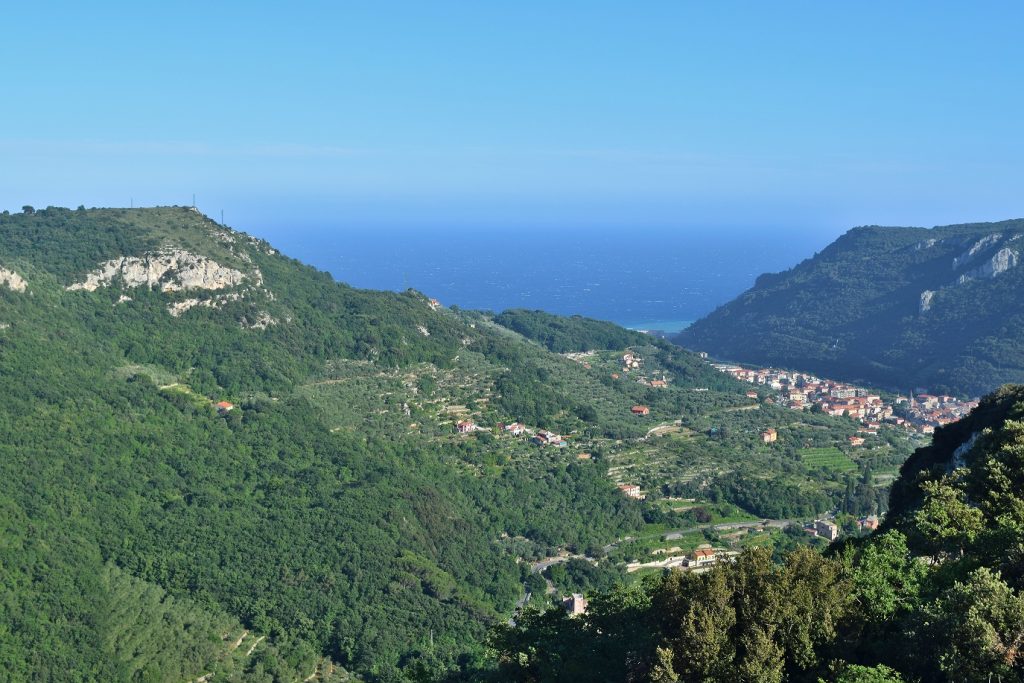The medieval profiles of Finalborgo had also fascinated the great director Federico Fellini. Which, passing through these parts of the Ligurian coast directed to Cannes, he had been accompanied around the streets of the village in search of corners to photograph and who knows, perhaps even in search of some film set to be put in the pipeline for a possible future new film. It was the early seventies. He did nothing of it, but certainly the tranquility and charm of these places particularly struck him. This episode is recounted in an intervention published on the local newspaper IVG on the occasion, last year, of the centenary of the birth of the great director.

Finalborgo, on the west coast between Savona and Imperia, is located in the hinterland of Finale Ligure, a municipality to which it belongs with the towns of Finale Pia and Finale Marina. Its strategic position, because it is surrounded by the two streams L'Aquila and the Pora whose beds, throughout history, have always represented a kind of natural moat, then further reinforced by a wall. Behind, the hill of Becchignolo fortified with the construction of Castel Gavone (today the ruins remain) and the Spanish fortress of San Giovanni. Another defensive barrier that characterizes this locality where the sense of protection and concentration is one of the characteristics that enrich its charm.
The ancient origins of one of the most beautiful villages in Italy
Closed between medieval walls with square or semicircular crenellated towers. Crossed by narrow streets and small streets perpendicular to each other, the medieval center of Finalborgo makes it one of the most beautiful villages in Italy. From ancient history, which originally remembers it with the name of Burgum Finarii because it has been a borderland since Roman times. Location rich in history and places to visit. Finalborgo belonged, between the fourteenth and sixteenth centuries, to the marquisate of the noble Del Carretto family. Its origin, however, dates back to the year XNUMX and probably even a few centuries earlier according to recent and important archaeological discoveries.

The locality is however from the fifteenth century. Characterized by a series of doors that allow access to the historic center and which confirm the importance that the wall fortification, almost entirely preserved, had for this village. Porta Reale, Porta Romana, Porta Testa, Porta Mezzaluna, all accesses to the heart of the town where there are XNUMXth century and Renaissance buildings. Among these the Town Hall, one of the best examples of the early Renaissance in Liguria. Cavassola Palace with its large slate portal which is precisely the stone of Finale because it is very widespread in the architecture of this locality. From the gates to the columns to the various ornaments that enrich the architecture. But also Gallesio Palace, Brunengo Palace, the Court, Messea, Chiazzari. And the nineteenth century Aycardi Theater, the oldest in western Liguria. They also deserve a mention there basilica of San Biagio, church of Santa Caterina and the Dominican complex with two beautiful Renaissance cloisters.
Among the scents of thyme and rosemary, excursions and the good food of Finalborgo
This is Finalborgo from a historical and artistic point of view. But the place, where you can breathe the air of the sea and the one that goes down the hill, among scents of thyme and rosemary, thanks to its particular position offers the possibility of climbing, trekking and beautiful excursions between sea and mountains, with openings on panoramas of great charm.

And in Finalborgo, to remember one of the famous people he gave birth to, he was born Giorgio Gallesio (1772-1839), famous botanist author of the Italian Pomona. A prestigious collection of colored drawings of Italian fruits distinguished by variety, with precise descriptions of all their characteristics. A fundamental document on the botanical culture of the time, a work that had great notoriety in Italy and in Europe. A gastronomic note. In Finalborgo it is impossible not to taste the ravioli of borage and the sausage known as Headcheese, a sopressata typical of these places. Testimony of good Italian food, from north to south of our peninsula.





